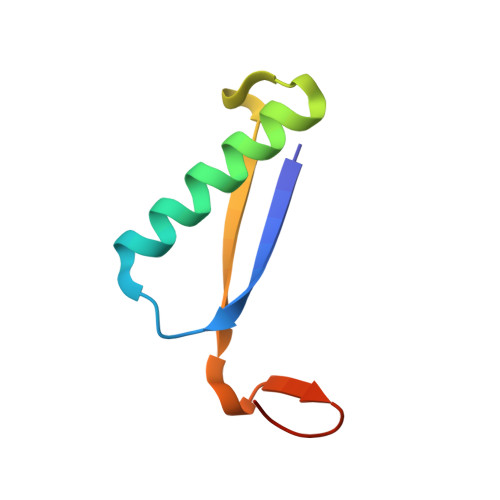Using mutability landscapes of a promiscuous tautomerase to guide the engineering of enantioselective Michaelases.
van der Meer, J.Y., Poddar, H., Baas, B.J., Miao, Y., Rahimi, M., Kunzendorf, A., van Merkerk, R., Tepper, P.G., Geertsema, E.M., Thunnissen, A.M., Quax, W.J., Poelarends, G.J.(2016) Nat Commun 7: 10911-10911
- PubMed: 26952338
- DOI: https://doi.org/10.1038/ncomms10911
- Primary Citation of Related Structures:
5CLN, 5CLO - PubMed Abstract:
The Michael-type addition reaction is widely used in organic synthesis for carbon-carbon bond formation. However, biocatalytic methodologies for this type of reaction are scarce, which is related to the fact that enzymes naturally catalysing carbon-carbon bond-forming Michael-type additions are rare. A promising template to develop new biocatalysts for carbon-carbon bond formation is the enzyme 4-oxalocrotonate tautomerase, which exhibits promiscuous Michael-type addition activity. Here we present mutability landscapes for the expression, tautomerase and Michael-type addition activities, and enantioselectivity of 4-oxalocrotonate tautomerase. These maps of neutral, beneficial and detrimental amino acids for each residue position and enzyme property provide detailed insight into sequence-function relationships. This offers exciting opportunities for enzyme engineering, which is illustrated by the redesign of 4-oxalocrotonate tautomerase into two enantiocomplementary 'Michaelases'. These 'Michaelases' catalyse the asymmetric addition of acetaldehyde to various nitroolefins, providing access to both enantiomers of γ-nitroaldehydes, which are important precursors for pharmaceutically active γ-aminobutyric acid derivatives.
Organizational Affiliation:
Department of Pharmaceutical Biology, Groningen Research Institute of Pharmacy, University of Groningen, Antonius Deusinglaan 1, Groningen 9713 AV, The Netherlands.















